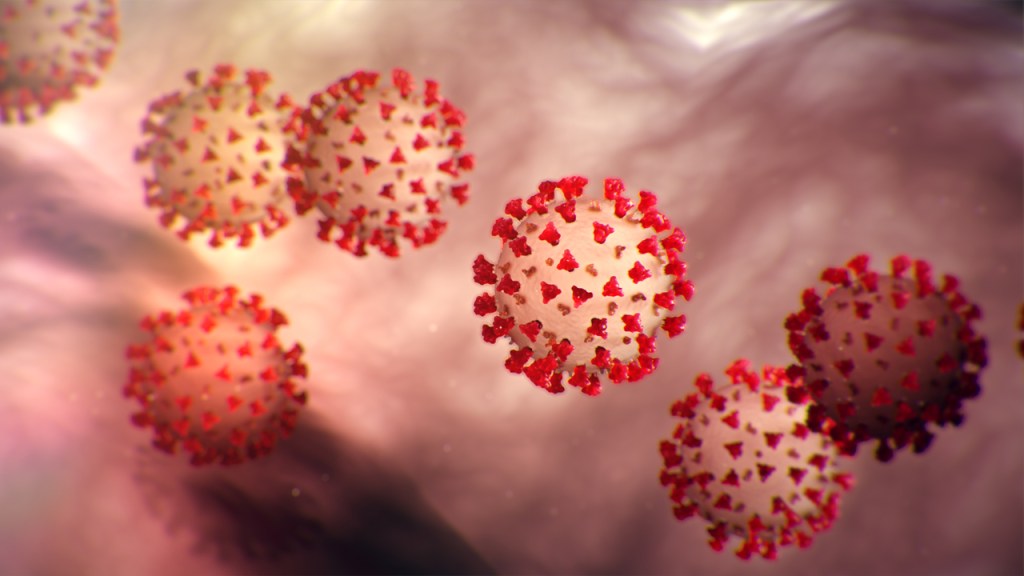State dashboard shows shows Region 4 ICU occupancy at 90 percent
Published 5:01 pm Tuesday, October 13, 2020

- COVID GRAPHIC
Tuesday’s daily report on COVID-19 data from the Louisiana Department of Health added 653 new cases, which should include both the new tests reporting on Tuesday as well as the leftover cases from Monday which were unreported due to technical issues.
Monday’s data showed only 63 new cases, with problems preventing the full number of new tests being reported. According to a statement posted on the LDH coronavirus dashboard Monday, the missing data were to be combined in the Tuesday report.
It is not clear how many of today’s 653 were held over from Monday.
The new confirmed COVID-19 cases raise the total identified infections so far in the state to 172,801.
The state added 20,582 new test results Tuesday, making the rough positivity rate for those 653 tests 3.17 percent.
The state’s seven-day average of tests given as of Oct. 7, the last date reported, was 28.13 tests per 10,000 residents. The positivity rate among those tests was 4.59 percent.
In Region 4, the Oct. 7 testing rate was well below the state average, at 23.16 tests per 10,000 residents. The seven-day average percent positive of those tests as of Oct. 7 was slightly below the state average, at 4.5 percent.
According to the Tuesday update, the number of deaths attributed to COVID-19 rose to 5,486, up from 5,462 on Monday. The LDH dashboard said there were 10 new deaths reported, although the difference in the two days’ reports is 24.
That rise represents an increase of 0.44 percent. The average age of fatal patients is 75, the median age 76. As of Oct. 7, 193 of those deaths were still considered probable COVID-19 fatalities pending final testing. The number of probable deaths attributed to COVID-19 is updated each week on Wednesday.
In Iberia Parish, the number of cases actually dropped by one, to 3,021 Tuesday. The number of deaths remained at 92, with 33,941 tests performed in the parish, an increase of 13. The LDH latest two-week incidence map update showed that the parish’s positive test rate dropped 28.46 percent, from 118.41 cases reported per 100,000 population on Sept. 9 to 107.13 per 100,000 on Sept. 23.
St. Martin Parish’s number of identified cases was at 2,140, an increase of 9, with 30,045 tests performed. The LDH two-week incidence map shows that on Sept. 23, St. Martin Parish had 61.54 cases reported per 100,000 population, a 47.6 percent drop from 117.49 per 100,000 in the last update. The number of deaths remained at 61.
In St. Mary Parish, total cases were at 1,979, an increase of seven, after 20,908 tests. The number of COVID-19 deaths remained at 81. The LDH incidence map shows that on Sept. 23 the parish had 162.74 cases reported per 100,000 population, up 30.7 percent from 124.56 on Sept. 9.
In Lafayette Parish, the Tuesday case count rose by one, to 9,183, with the number of tests rising to 144,720. The number of deaths rose by one, to 136. The LDH incidence map shows that the parish had 119.86 cases reported per 100,000 population on Sept. 23, down 12.9 percent from 137.57 on Sept. 9.
The number of cases in Jefferson Parish rose to 18,118 on Tuesday, an increase of 74, compared to 13,022 in Orleans Parish, an increase of 61. The latest data shows Orleans administered more tests, with 231,067 tests in Jefferson compared to 274,382 in Orleans.
Despite lower case numbers, the more urban Orleans Parish has seen 10 more deaths than its suburban neighbor. Orleans Parish deaths remained at 588. In Jefferson Parish, the total number of deaths remained at 578. The LDH two-week incidence map shows that on Sept. 23, Jefferson Parish had 108.28 cases reported per 100,000 population, down from 141.92 on Sept. 9. In Orleans, that number was 99.49 per 100,000, down from 173.65.
The LDH reporting of data on hospitalizations due to the disease is still running 24 hours behind. On Tuesday, the state reported 573 hospitalizations as of Monday, a decrease of four from 577 on Sunday. The number of patients on ventilators dropped by two, to 68 Monday. That is down from 70 on Sunday.
The number of COVID-19 hospitalizations in Region 4, which covers Acadiana, was down three, to 51 Monday. The number of patients on ventilators Monday dropped by two, to five.
The overall intensive care bed occupancy rate in Region 4 was still high Monday at 90.1 percent, with 145 beds occupied and 16 ICU beds still available. The total number of ICU beds available was at 161. That is still down from the count of active ICU beds before Hurricane Laura, which hovered above 180.
Thursday’s data also showed that hospital bed occupancy was up slightly in Region 4, with 1,168 — 75.02 percent — of the region’s beds occupied and 389 available. The total number of reported beds was at 1,557.
When compared by age group, the number of cases in the 18 to 29 demographic was at 38,500 Tuesday. It is the demographic group with the largest number of identified cases by far. The number of deaths reported in the group rose by one, back to 24.
The number of COVID-19 cases identified in the 30 to 39 age group was at 27,773, with 80 deaths (a drop of one), followed closely by the 40 to 49 age group, with 25,486 cases and 177 deaths, and the 50 to 59 age range with 24,969 cases, including 474 fatalities reported.
The 70 and above group case count was at 19,877. The number of deaths in that group rose by five, to to 3,733 — still the largest number of fatalities for any age group by far, more than the number of deaths in all other groups combined and more than two-thirds of the total COVID-19 attributed deaths in the state.
In the 60 to 69 age group, there were 19,632 cases reported and 994 deaths. This age group has the second-highest number of deaths, behind only the 70 and above demographic group.
The under 18 group, the smallest demographic segment, had 16,357 cases total and four reported deaths.
According to Friday’s update, labs in Louisiana have processed at least 2,510,319 COVID-19 tests so far.
The state has also started tracking possible cases, which is the number of individuals with a positive test detecting SARS-CoV-2 antigens. That number was 2,528 as of Oct. 7, double the number from the previous week. According to an LDH spokesman, individuals initially identified as having a positive antigen test who are later identified as having a positive confirmatory test will be removed from the probable case count and added to the cumulative case count.
By gender, the state’s daily report shows women making up the largest part — 55 percent — of the identified COVID-19 cases in the state, with men comprising 44 percent and 1 percent unknown. On the other hand, the COVID-19 deaths are predominantly among men, 52.3 percent to 47.7 percent for women.
The number of presumed recovered cases, as of Oct. 7, rose to 157,873. In order to be considered recovered, a living patient must either be out of the hospital and 14 days past a positive test result, or 21 days past a positive test date if their hospitalization status is unknown.
On Oct. 7, the weekly update of fatalities by race showed the percentage of COVID-19 deaths among White victims climbed four-tenth of a percent, while the percentage of Black fatalities continued to drop.
Initially, LDH reported that 70 percent of all COVID-19 deaths in the state were in the Black community. That number has since dropped to 45.7 percent as of Oct. 7, while White victims now make up 52.89 percent of all fatal cases.
The Native American/Alaskan Native total remained at 0.09 percent. Native Hawaiian/Pacific Islander data remained at 0.08 percent. Other races identified include Asian at 0.67 percent and Other at 0.52 percent.
The number of Black deaths is still disproportionate to the demographics of the state’s population. African Americans make up less than 40 percent of Louisiana’s populace.
That data is only reported once a week, updated on Wednesday.
The top three underlying conditions among COVID-19 deaths in the latest report were hypertension (52.17 percent), diabetes (31.13 percent), and cardiac disease (20.43 percent).
Other factors included neurological disorders (19.56 percent), chronic kidney disease (18.08 percent), obesity (16.69 percent), congestive heart failure (13.31 percent), pulmonary issues (11.30 percent), cancer (6.64 percent), and asthma (3.4 percent).





